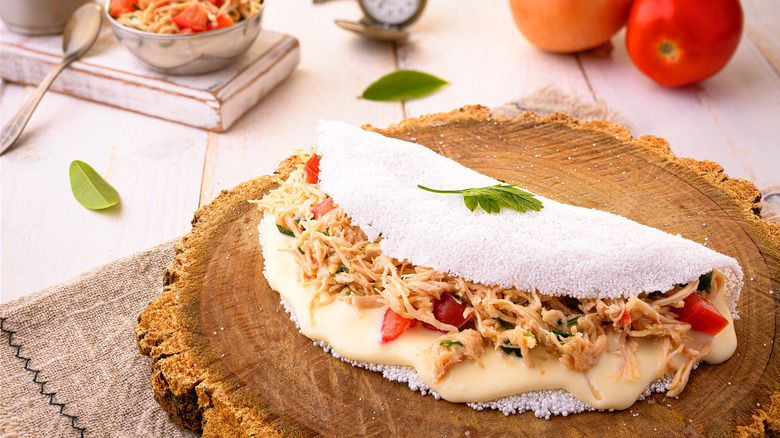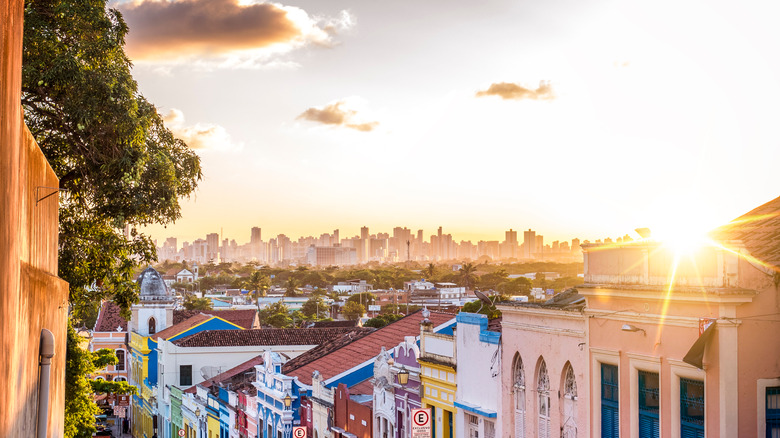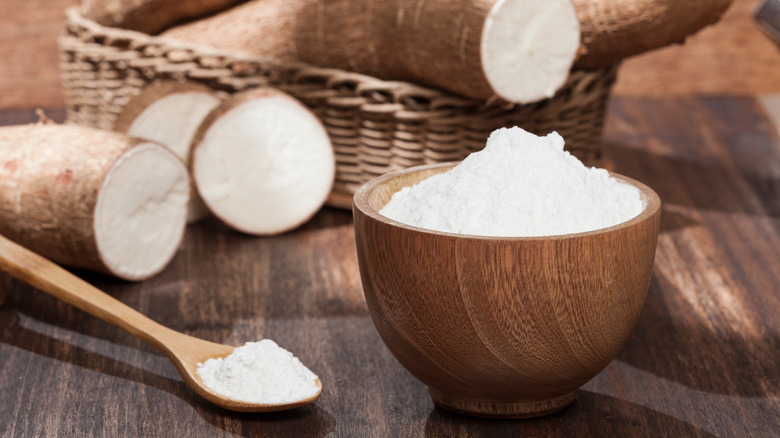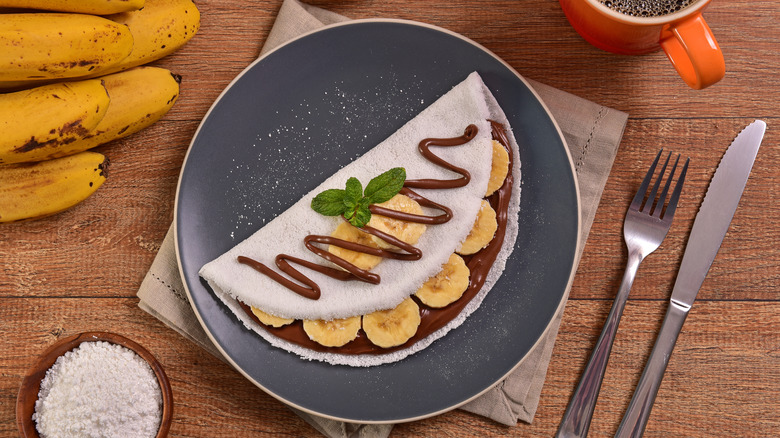Brazilian Tapioca Is A Starchy Take On The Crepe
Your favorite Brazilian dishes, whether that's savory and meaty pastéis or simple parmesan-y Brazilian cheese bread, have likely been heavily influenced by many different cultures. Brazil, like many other countries impacted by colonialism, has become a melting pot that has seen its cuisine change over the centuries. According to Brazil Selection, 16th-century Portuguese colonization, the following importation of African slaves, and traditional Indigenous traditions have all deeply influenced the food eaten in Brazil today, from their names to their ingredient lists.
One such dish, known as Brazilian tapioca, may have a current grip on the nation as a trending health food, but its roots lie in Indigenous tradition. This simple, tasty, and versatile meal is made up of tapioca starch, and it can be filled with all types of ingredients to make it sweet or savory. If you haven't yet discovered how to make Brazilian tapioca for a quick lunch, or uncovered its importance in the nation's culture, then you've found yourself in the right place.
History of Brazilian tapioca
Brazilian tapioca, also called "beiju," as per Laylita's Recipes, is a popular street food in the North and Northeastern part of the country. According to Brazilian Kitchen Abroad, vendors line the streets in this region and push out tapioca filled to the brim with plenty of cheese, butter, coconut, and condensed milk.
This dish was first invented by the indigenous peoples of this region, as Brazil Selection says. Cassava flour has long been a "staple ingredient" of the indigenous groups from the Nordeste and Amazon regions. Today, the dish is commonly served year-round by street vendors in the city of Olinda and around the state of Pernambuco, according to Laylita's Recipes.
Brazil Kitchen Abroad adds that this dish also received an "immaterial and cultural heritage symbol" in the city of Olinda, Pernambuco in 2006, due to its important cultural significance.
Today, however, tapiocas have become popular throughout the entire country of Brazil due to their health benefits. They're perfect for a fat-free and gluten-free diet. They're also a great vegan option.
Ingredients in Brazilian tapioca
If you're looking for a minimal ingredient, low calorie, and no fat wrap, leave those cauliflower and spinach tortillas on the supermarket shelves. This will be your next best go-to healthy meal.
Brazilian tapioca is only made of tapioca starch, water, and salt, according to The Spruce Eats. The outlet notes that manioc is the tuberous root plant from which tapioca starch derives. It originated in South America, and it has appeared in many different forms throughout many of the continent's regional cuisines. Prized for its versatility, it has been eaten there for centuries.
Tapioca can also be made with tapioca flour instead, as the two are very similar. Not only does this have no fat and minimal calories, but it is also gluten-free, as per TODAY. So, if you're currently adhering to a gluten-free lifestyle, this is a perfect substitution for typical wraps and breads.
The rest of the ingredients depend on you. Whether you decide to make a sweet breakfast tapioca full of bananas and Nutella, or a savory lunch meal with melty cheese, the best part of this dish is enjoying your favorite fillings. Possibly even better, it can be made in almost no time.
How Brazilian tapioca is made and eaten
Brazilian tapioca is easy to make with only two main steps to follow. First, as per TODAY, the starch is mixed with a little bit of water. After whisking thoroughly, it will be slightly moist. But, the mixture will be on the drier side, so resist any urge to make it a dough-like consistency.
Then, you can sprinkle the mixture into a heated nonstick pan. When the pan is evenly covered, it can cook for about half a minute, according to The Spruce Eats. No oil, butter, or any other type of fat is needed. It can then be flipped and cooked for the same amount of time.
As per The Spruce Eats, once your tapioca is ready, make sure to fill them with your desired toppings right away. The warmth keeps them flexible enough to fold over and elevates the eating experience. Since the wrap is virtually tasteless on its own, they're a great blank slate for your creativity. Savory or sweet, pretty much any combination of fillings goes. It can be as simple as a drizzle of olive oil, as Brazilian Kitchen Abroad notes, or stuffed with ham and cheese.
Once you fill your tapioca, make sure it's served alongside hot black Brazilian coffee and enjoyed with others, as per Laylita's Recipes. The next time you find yourself with a relaxing afternoon ahead of you, whip up some tapioca, brew some coffee, and invite people over for a true Brazilian experience.



